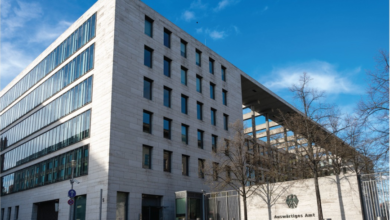
Bahruz Orujov
Adviser of the State Committee on Religious Associations of the Republic of Azerbaijan
- ORTHODOX CATHEDRAL CHURCH OF THE HOLY MYRRH-BEARERS
The Holy Myrrh-Bearers Orthodox Cathedral church was constructed in 1909 on the bases of M.F. Verjbitski’s projects in the Russian architectural style with the financial backing of the philanthropist, outstanding son of the Azerbaijani People Haji Zeinalabdin Tagiyev. The church is dedicated to the Holy Myrrh bearers, who are commemorated on the second Sunday after Pascha (Easter). In 1920, it was one of the first places of religious worship to be closed down because of Sovietization. It was used first as a warehouse, gym and later as a barrack in 1988-1989.
On 27 May 2001, Patriarch of Moscow and All Russia Alexy II consecrated the church and elevated the church’s status to that of a cathedral.
The Holy Myrrh-Bearers Cathedral holds on to a shrine with the relics of St. Bartholomew the Apostle, who is believed to have been crucified near the Maiden Tower.
- MOUNTAIN JEWS SYNAGOGUE
The building of the Synagogue of Mountain Jews in Baku has been functioning since 1945. During the Soviet era, after the end of World War II, mountain Jews were granted an ancient building for religious needs in the center of the city. The condition of the building was very damaging and those who worshiped here were suffering from unpleasantness. This situation continued until Azerbaijan regained its independence. During the period of independence, restoration work was started, the second floor of the synagogue was built up and favorable conditions were created for worshipers.
There was a need for a new synagogue for Mountain Jews in connection with the reconstruction and capital restoration works of Baku in 2010. Renovation work was also made possible in the synagogue thanks to the constant attention and care of President Ilham Aliyev about the religious cultural heritage. The new building of  the temple differs from other existing synagogues not only in Azerbaijan, but also in the whole region due to its volume-space structure and architectural solutions. Inauguration of the new temple for the Mountain Jews was held on April 5, 2011.
the temple differs from other existing synagogues not only in Azerbaijan, but also in the whole region due to its volume-space structure and architectural solutions. Inauguration of the new temple for the Mountain Jews was held on April 5, 2011.
- THE CHURCH OF THE VIRGIN MARY’S IMMACULATE CONCEPTION
Church of the Virgin Mary’s Immaculate Conception (or also known as the Blessed Mary Catholic Church) was rebuilt after Pope John Paul II’s visit to Azerbaijan on 23 May 2002. The plot of land for building was presented to the Church by national leader of the Azerbaijani people Heydar Aliyev.
The new building of the church was constructed in 2007, in a different spot of Baku according to the Italian architect Paolo Ruggiero’s and Baku’s Chief City Architect Akif Abdullayev’s project in the modern style with elements of Neo-Gothic. The church was designed to have a pastoral center and a residency for priests. The statue of the Virgin Mary by local sculptors was set up over the entrance of the Church, which has 200 benches. Simultaneously, about 250-300 people can worship in the Church. The congregation’s working languages are Russian and English. 
Church was inaugurated by Cardinal Secretary of State Tarcisio Bertone on 7 March 2008, 70 years after it had been shut down by the Soviets. During his pastoral visit to Azerbaijan on 2 October 2016, Pope Francis celebrated the Holy Mass at the Church of the Immaculate Conception.
- SYNAGOGUE OF EUROPEAN AND GEORGIAN JEWS
The European and Georgian Jews Synagogue (also known as the Ashkenazi Synagogue), located in Baku, was opened on March 9, 2003. The synagogue was constructed on the bases of Alexander Karber’s projects in the style of Jerusalem. This place of worship is regarded as the first synagogue built in the Near East in 60-80 years.
This building, which is considered to be one of the largest synagogues in Europe, was erected on the site of the old temple. After the Second World War, Soviet authorities allocated European and Georgian Jews a one-storey building which had been used as an ancient military warehouses to exercise religious needs. Here men used to go down into cold and damp basement for praying and women pray in the upper room. The balcony of the building was also given to women. 
At present, comfortable conditions have been created for believers in three-storied new synagogue built from white stone. People from different religions and classes participated in construction of the synagogue. Each person and organization that has been specially involved in the project is engraved on boards at the entrance to the synagogue. Not only Jewish organizations operating abroad, but also Caucasian Muslims Office and the Baku and Azerbaijan Eparchy of Russian Orthodox Church have been closely involved in financing the construction.
* LUTHERAN CHURCH OF THE SAVIOUR
Church of the Saviour (also known as the “kirkha”), an EvangelistLutheran church in Baku, was built with donations by parishioner Adolf Eichler and consecrated on March 14, 1899. The cornerstonelaying ceremony was held on March 21, 1896. Nobel brothers also paid attention to the construction of this building. The Gothic-style church features a portal crowned with a decorated pediment.
Capital reconstruction and overhaul commenced in the building in 2010 by preserving the original style and the ancient historical architecture of the building. It is now Baku Organ and Chamber Music Hall of the Azerbaijan State Philharmonic.
- SAINT GREGORY THE ILLUMINATOR CHURCH
St. Gregory the Illuminator Church, commonly referred to as the Armenian Church of Baku, is located near  Fountains Square in downtown Baku. The church was constructed between 1863 and 1869 (in 1887, according to some sources) by Karl Karlovich Gippius, architect of the city of Baku. This Church ran its activities till 1990. In 2003 the church was refurbished at the expense of the government of the Republic of Azerbaijan.
Fountains Square in downtown Baku. The church was constructed between 1863 and 1869 (in 1887, according to some sources) by Karl Karlovich Gippius, architect of the city of Baku. This Church ran its activities till 1990. In 2003 the church was refurbished at the expense of the government of the Republic of Azerbaijan.
- REMAINS OF SAINT BARTHOLOMEW’S CHAPEL
Saint Bartholomew, one of the Twelve Apostles of Jesus Christ, was the best known of the preachers of the Gospel. He preached Christianity in Baku where fire-worship traditions had been deeprooted. However, Bartholomew’s doctrine was rejected and according to a biblical legend, he was executed near the walls of The Maiden Tower in AD 71. The place of execution was marked by a small chapel. 
The Chapel of St. Bartholomew was built in 1892 over an old church spot in the Russian architectural style by donations. However, during the Soviet period, the chapel was destroyed just like many other religious temples in 1936. The Christian Church canonized Apostle Bartholomew and June 24 is celebrated as Saint Bartholomew’s Day.
- SIX DOMES SYNAGOGUE OF RED VILLAGE
Sıx Domes Synagogue was built in 1888 by architect Gilel Ben Haim. Six domes (synagogue is also hexagonal) is a symbol of immigrating of the residents of Gilgat quarter here from the Galaduz village during 6 days with the permission of Huseynali khan of Guba Khanate. The temple has 14 main windows. Its height is 7 meters.
The windows are made of oak tree in hexagonal star. The section facing the wall of worship is called aron-kadush. The Holy book is kept in a wardrobe on the wall. There is also a 60-person worship hall for religious ceremonies at the temple’s cellar and a kitchen. The restoration of the synagogue began in 1995 and was completed in October 2000.
The synagogue, a large worship hall, is an ancient architectural monument built in the Eastern style. This synagogue is the unique one in Europe because of its height, and directed towards Jerusalem. Jews every day freely worship in the synagogue, celebrate their festivals, hold mourning ceremonies.
The synagogue is included in the list of historical monuments by the Ministry of Culture of the Republic of Azerbaijan and protected as a religious and historical monument by the state.
The Chotari Albanian Udi Church is located in the village of Nij of Gabala city. It was built in 1723 at the expense of local residents. The name for the church was derived from the quarter of Chotari. During the Soviet era, the church was used as a nut storage. After 3 year-long reconstruction works, the church was put into service of believers in 2016.
- “KISH” TEMPLE
Kish temple or Alban Apostolic Church of St Eliseus (also referred to as the mother of eastern churches) has been religious enlightenment center of the Caucasian Albanian Apostolic church for centuries. The Albanian apostolic church is considered one of the oldest in the Caucasus, as well as in the entire Christian world. The spread of Christianity in Albania and the establishment of the first church are associated with the names of apostles. According to legend, James who was one of Jesus’s Twelve Apostles sent St. Eliseus to Albania to promote Christianity. After completing missionary work in Chola and Uti province, St. Eliseus went to Gish village where he built a church in I century in Apostolic period. This is the first Christian church not only in the territory of Albania, but also in the whole Caucasus. The temple passed through several stages for the period of its existence. In the XIX century, the temple was refurbished.
Full-scale reconstruction and restoration work was carried out in the temple in 2003. Protected as the historical monument, Kish temple is used as the museum.
- KURMUK TEMPLE
Kurmuk is one of the most ancient Caucasus Albanian temples of the early Middle Ages. Early construction history of this temple located near to the Ambarchay village of Gakh district dates back to I-III centuries.
Researchers claim that there has been a Moon temple in the high hill of rocky area at the site of Kurmuk. This temple had been a place of worship before the Christianity emerged. The “black stone” here has become holy site for believers in very early ages. In the pre-Christian era, the inhabitants of Albania worshipped the Goddess of the Moon – Selene and that temple was built in her honor. After Christianity became state religion of Caucasian Albania, the temple of Kurmuk in the place of Moon sanctuary was established. 
In the following period, Kurmuk temple was replaced with Russian Orthodox Church by the support of “Society for the Resurrection of Orthodox Christianity in the Caucasus” in 1892-1894. In 2004, renovation work carried out in the church. Nowadays, Kurmuk temple is visited by pilgrims during “Kurmukoba” holiday in April and November. It is one of the rarest places visited by both Christians and Muslims. It is necessary to offer a sacrifice after every pilgrimage. Interestingly, Christian pilgrims during their pilgrims do not slaughter pigs which is prohibited in the Islamic religion.
- HEYDAR MOSQUE
This mosque is the largest construction cult-religious architecture not only in Azerbaijan, but also in the entire South Caucasus. Construction of the mosque named after National Leader of Azerbaijani people Heydar Aliyev has started in September 2012 under the instructions of the head of state. The mosque can admit up to 5000-7000 worshippers at a time. The building, which covers a total area of 12,000 square meters, was built under the instructions of the head of state. It has four 95m-height minarets. The mosque covers a total area of 4,200 square meters. It has 55m-height main and 35m-height second domes. The facade of the mosque is revetted with special ornamental stones in the Shirvan-Absheron architectural style, interior decoration is made of marble and wood. The mosque houses ceremonial halls.
The Heydar Mosque was opened in Baku on December 26, 2014. Unity prayers had been rendered in Heydar mosque since January 2016. Sunnis and Shiites have been praying together in the mosque.
- ATESHGAH TEMPLE
The Temple of Eternal Fire – Ateshgah – is an authentic Azerbaijani exotic. Ateshgah or “Fire Temple” is a Zoroastrian or Hindu castlelike religious structure. “Ateshgah” means “House of Fire”, “the place of fire.” The Temple, revered by Zoroastrians, appeared at the place of “eternal” inextinguishable fires – burning natural gas output.
After the introduction of Islam, Zoroastrian temple was destroyed. Many Zoroastrians left to India and continued their worship there. However, in the 15th -17th centuries the Hindu-fire worshippers who came to Absheron with trading caravans began to make pilgrimages to Surakhany. The Indian merchants started erection of the temple. The earliest temple part dates to 1713. The latest – the central temple-altar was built in 1810. During the 18th century chapels, 26 cells, a caravanserai were added to the central part of the temple. Pilgrims, who visited the temple, had the opportunity to relax in the caravanserai. 
In the early 19th century, the temple acquired its present-day appearance. Ateshgah is a pentagonal structure with a castellation and entrance portal. In the center of an altar – a well from which beat “eternally” burning gas. Being turned into a museum in 1975, the complex was declared a state historical-architectural reserve by decree of the President of Azerbaijan on 19 December 2007.
Ateshgah Temple is one of Azerbaijan’s most sacred monuments and included in the UNESCO World Heritage List in 30 September 1998.
- SHAMAKHI JUMA MOSQUE
Shamakhi Juma Mosque is the oldest mosque in Azerbaijan. After the Shamakhi Juma Mosque was built in 743, it had a special role in the history of Azerbaijan and of Islam, as it is considered the starting point of a new age in either religious and cultural, or social and economic, or even political and ideological affairs.
The Juma Mosque was severely damaged in earthquakes in 1859 and 1902. It was restored based on designs by architects Ziverbey Ahmedbeyov and Jozef Plosko. The restored mosque, however, was set on fire and destroyed by Armenian Dashnak and Bolshevik troops during the March 1918 mass slaughter.
The mosque can admit up to 1,500 congregants at a time. Its courtyard has been significantly improved, with the addition of two pools and six galleries. The mosque also has a conference room, auxiliary rooms and a big library.
The Ganjasar Monastery was the shrine of the Jalalids, Albanian kings. The Ganjasar Monastery, known as the Khaznadag Temple, was constructed in the XIII century. At present, Armenians misrepresent the Ganjasar Monastery as “Ganzasar” Armenian monastery complex to the world.






